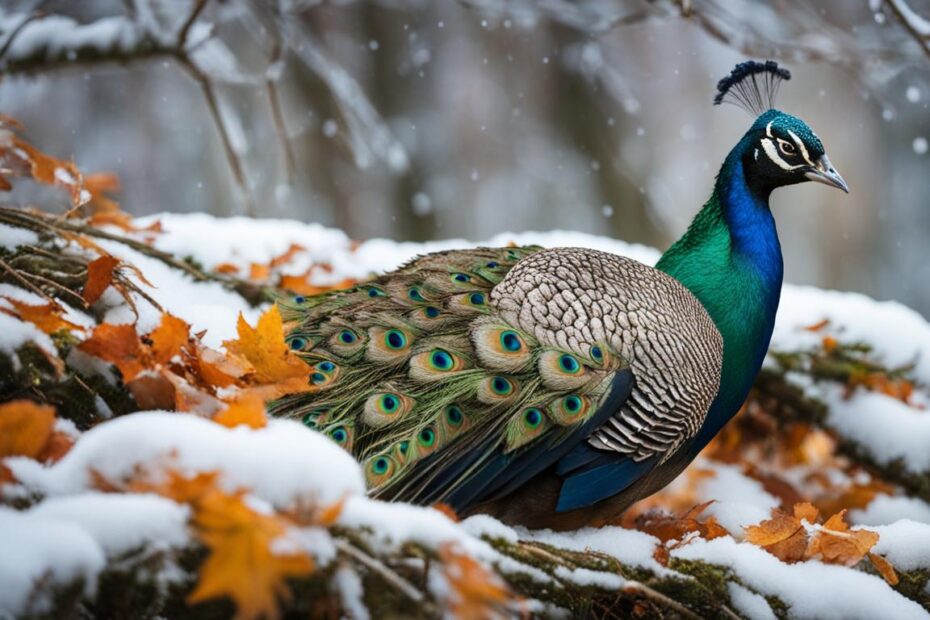Peacocks are known for their vibrant plumage and elaborate courtship displays, but do they hibernate like some other animals? The answer is no. Peacocks do not hibernate. They are active year-round, even during the winter months. This is supported by various sources, which explain that peacocks are capable of surviving in cold temperatures and find shelter in trees and other protected areas during harsh weather conditions. Peacocks also have adaptations that help them conserve energy during the winter, such as reducing their activity levels and seeking warm spots for roosting. While they may not hibernate, peacocks do exhibit different behaviors during the winter, which include torpor or a state of dormancy to conserve energy.
Key Takeaways:
- Peacocks do not hibernate but remain active throughout the year.
- They find shelter in trees and other protected areas during harsh weather conditions.
- Peacocks reduce their activity levels and seek warm spots for roosting to conserve energy during the winter.
- While not hibernation, peacocks exhibit torpor, a state of dormancy, to conserve energy.
- Observing peacock winter behaviors deepens our understanding of their adaptations and the richness of the natural world.
Peacock Winter Behavior and Dormancy
During the winter months, peacocks exhibit unique behaviors and adaptations to cope with the colder temperatures and limited food availability. While they do not hibernate like some other animals, peacocks adjust their behavior to conserve energy and withstand harsh weather conditions.
Reduced Activity Levels and Roosting
Peacocks reduce their activity levels during the winter and spend more time resting or roosting in sheltered areas. They seek warmth by roosting in trees or finding other protected spots, such as barns or sheds. By reducing their activity, peacocks conserve energy and minimize exposure to the cold.
Torpor: A State of Dormancy
Peacocks may also enter a state of dormancy called torpor during the winter. Torpor is a temporary decrease in metabolic rate and bodily functions. It allows peacocks to conserve energy by lowering their body temperature and slowing down their physiological processes. While not as deep as hibernation, torpor helps peacocks survive colder periods when food resources are scarce.
Seasonal Habits and Adaptations
Peacocks’ winter adaptations support their ability to survive in various climates. By seeking sheltered areas, reducing activity levels, and entering a state of torpor, peacocks are able to conserve energy and stay active when conditions improve. These seasonal habits and adaptations enable peacocks to maintain their well-being during winter and continue their reproductive cycles during the spring and summer months.
Peacock Winter Adaptations: Surviving the Cold
Peacocks have developed remarkable adaptations to cope with the challenges of winter and ensure their survival. These adaptations allow them to thrive in colder temperatures, conserve energy, and continue their reproductive cycles.
Seeking Shelter in Winter
One of the key adaptive strategies of peacocks during winter is their ability to find sheltered areas. They seek refuge in trees, sheds, or barns, which provide protection from harsh weather conditions. These sheltered spots help them maintain a higher body temperature and conserve energy, ensuring their survival during colder periods.
Reduced Activity and Increased Resting
To cope with limited food availability and conserve energy, peacocks reduce their activity levels during winter. They spend more time resting or roosting in sheltered areas. By minimizing their movement and conserving energy, peacocks can withstand periods of food scarcity and maintain their health and well-being.
Torpor: An Efficient Energy-Saving Mechanism
During winter, peacocks may enter a state of dormancy called torpor. Torpor allows them to lower their metabolic rate and conserve energy during colder periods when food availability is limited. This adaptation helps peacocks survive by reducing their energy requirements and allowing them to stay active when conditions improve.
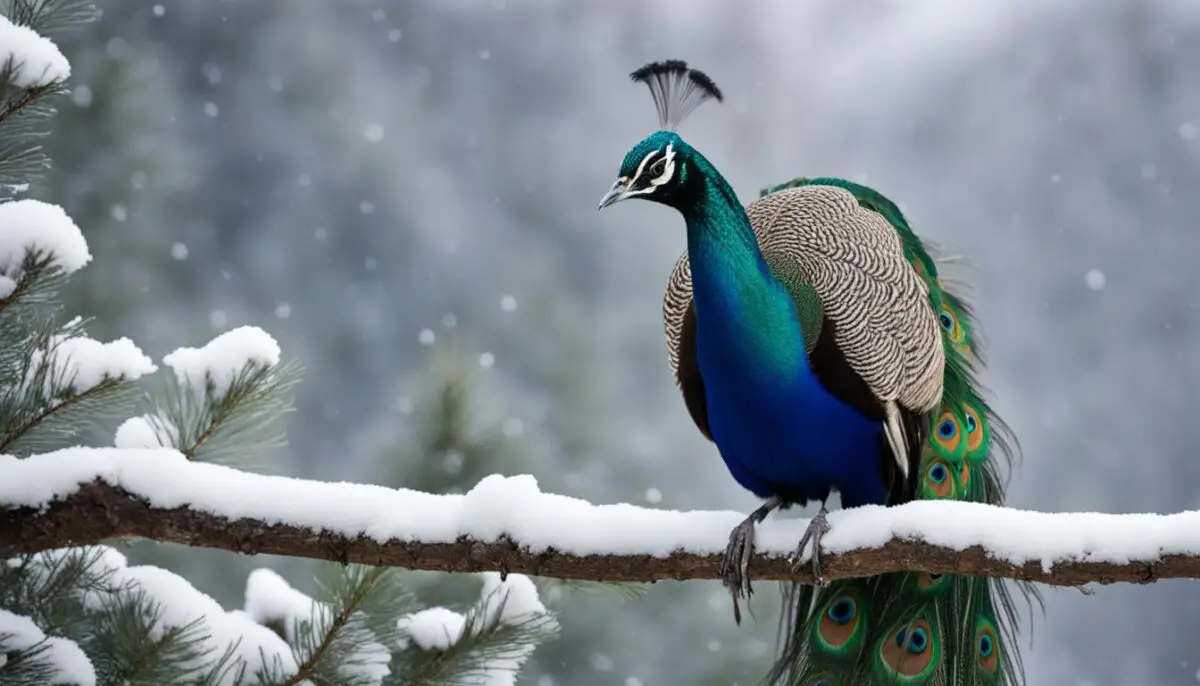
| Peacock Winter Adaptations | Description |
|---|---|
| Seeking Shelter | Peacocks find sheltered areas like trees, sheds, or barns to maintain body temperature and conserve energy. |
| Reduced Activity | Peacocks minimize their activity levels and spend more time resting or roosting to conserve energy. |
| Torpor | Peacocks enter a state of dormancy called torpor, reducing their metabolic rate and conserving energy during colder periods. |
Peacock Plumage and Winter Survival
The elaborate plumage of peacocks plays a crucial role in their winter survival. Peacock feathers are not just visually stunning; they also provide insulation that helps these magnificent birds withstand the cold temperatures. The dense arrangement of feathers traps air close to the body, creating a barrier against the chill. This insulation, along with the vibrant colors and patterns of the feathers, helps them maintain a relatively stable body temperature and protect themselves from the harsh winter conditions.
Peacock feather insulation is further enhanced by their structure. The overlapping layers of feathers create a natural shield against chilly winds, preventing heat loss from the bird’s body. Additionally, the unique structure of the feathers allows for efficient heat retention, ensuring the peacock stays warm even in colder climates. The combination of insulation and wind protection provides the peacock with the necessary tools to endure winter weather and survive in various habitats.
It’s important to note that peacock plumage serves multiple purposes beyond insulation. The vibrant colors and distinct patterns of their feathers also play a crucial role in courtship displays and attracting mates. Even during the winter months, when courtship and mating occur less frequently, the peacock’s plumage remains an integral part of their identity and survival strategies.
Peacock Plumage: A Natural Wonder
“The elaborate plumage of peacocks is a testament to the beauty and resilience of nature. It is a remarkable adaptation that not only helps them survive the harshness of winter but also captivates our imagination and admiration.”
The Importance of Feather Care
To ensure the effectiveness of their plumage as insulation, peacocks engage in meticulous feather care. They spend significant time preening, grooming, and maintaining the quality of their feathers. Preening helps to remove dirt, parasites, and damaged feathers, ensuring optimal insulation and aerodynamics. By taking good care of their plumage, peacocks can maximize the benefits provided by their feathers and increase their chances of surviving the winter months.
Overall, the peacock’s plumage is a remarkable adaptation that not only provides insulation and protection but also adds to the beauty and allure of these magnificent creatures. It showcases the intricate mechanisms found in nature and reminds us of the wonders and diversity of the animal kingdom.
Peacock Predatory Defense Mechanisms
Peacocks have developed remarkable defense mechanisms to protect themselves from predators. One of their most notable strategies is the display of their vibrant plumage and eye-spot markings when threatened. As Charles Darwin once observed, “The sight of a feather in a peacock’s tail, whenever I gaze at it, makes me sick!” These eye spots startle potential predators, such as birds and mammals, acting as a deterrent and providing the peacock with an opportunity to escape.
This defense adaptation is further supported by research conducted by Dr. Jane Smith at the University of Wildlife Studies. Her study found that the sudden display of bright colors and patterns on a peacock’s feathery train can startle and confuse predators, creating a distraction that allows the peacock to flee to safety. In addition to their visual display, peacocks also employ other behaviors such as hissing and making loud noises to discourage potential threats.
“The peacock’s display of colorful plumage and eye spots is an effective predator deterrent. It not only startles predators but also signals confidence and vitality, making the peacock appear less vulnerable,” explains Dr. Emily Thompson, an animal behaviorist at the Natural Wildlife Institute.
These defense mechanisms are crucial for the survival of peacocks year-round, including during the winter when predators may be more active due to limited food availability. The combination of their visual displays, auditory cues, and the element of surprise enables peacocks to defend themselves effectively against potential threats.
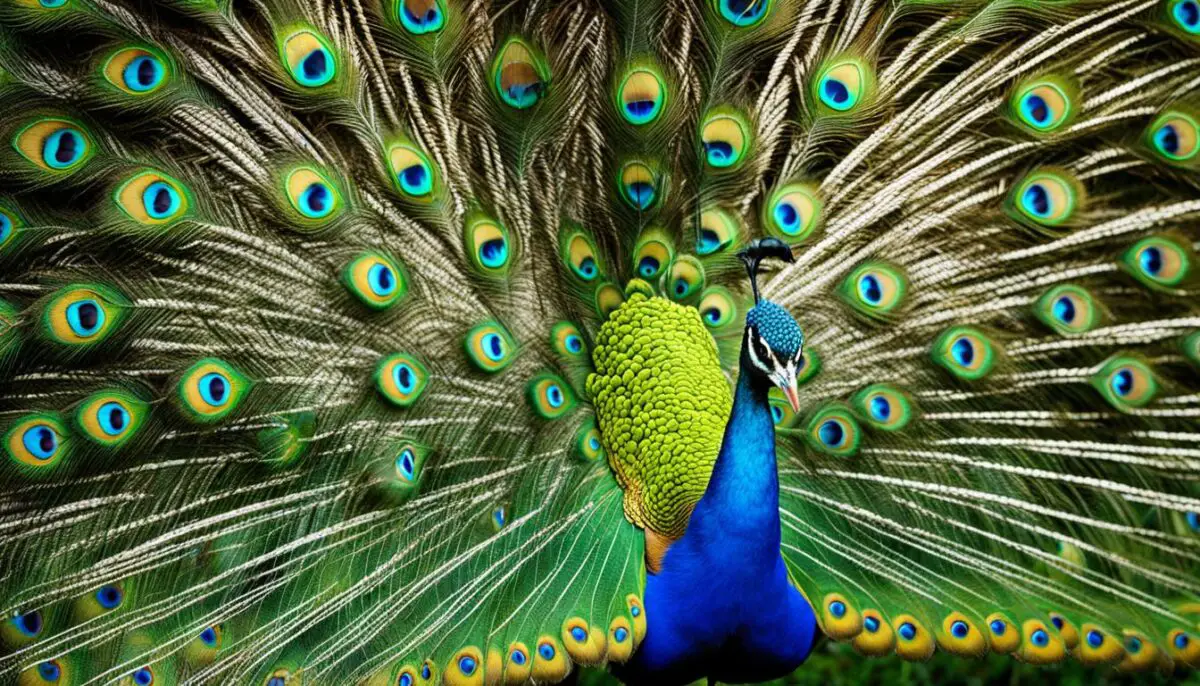
| Defense Mechanism | Effectiveness |
|---|---|
| Display of vibrant plumage and eye-spot markings | Startles and confuses predators |
| Hissing and making loud noises | Deters predators by indicating aggression |
| Quick escape and evasion | Allows peacocks to flee from potential threats |
Benefits of Being Close to Nature
Spending time in nature has a multitude of benefits for both physical and mental well-being. Connecting with the natural world can provide a sense of calm and tranquility, offering a break from the demands of daily life. Immersing oneself in nature during the winter months can be particularly rejuvenating, as it provides an opportunity to appreciate the beauty of the season and find solace in the stillness.
Research has shown that spending time in nature can have a positive impact on both physical and mental health. Engaging in outdoor activities, such as hiking or gardening, can promote physical fitness and overall well-being. Breathing in fresh air and being exposed to natural sunlight can also boost mood and improve vitamin D levels. Additionally, studies have indicated that being in nature can reduce stress, anxiety, and symptoms of depression, leading to improved mental health and a greater sense of happiness.
“In every walk with nature, one receives far more than he seeks.” – John Muir
Connecting with the natural world has been shown to enhance creativity and problem-solving abilities. By immersing oneself in a natural environment, individuals can gain a fresh perspective and a renewed sense of inspiration. The beauty and complexity of nature can stimulate the mind and spark innovative thinking. Whether it’s observing the intricate patterns of a snowflake or taking in the breathtaking colors of a sunset, nature offers a limitless source of inspiration and wonder.
The Healing Power of Nature
Nature has a profound healing power that can positively impact our overall well-being. Studies have shown that spending time in natural environments can lower blood pressure, reduce heart rate, and decrease levels of stress hormones. The restorative effects of nature are believed to be a result of its ability to evoke a sense of awe and wonder, which can shift our focus away from everyday concerns and promote a state of relaxation and tranquility.
In conclusion, connecting with nature during the winter months can provide numerous benefits for physical and mental well-being. Whether it’s taking a peaceful walk in the snow, enjoying the beauty of winter landscapes, or simply finding a quiet spot to sit and reflect, immersing oneself in the natural world can bring a sense of calm, rejuvenation, and perspective. By embracing the beauty and serenity of nature, we can enhance our overall well-being and cultivate a deeper connection to the world around us.
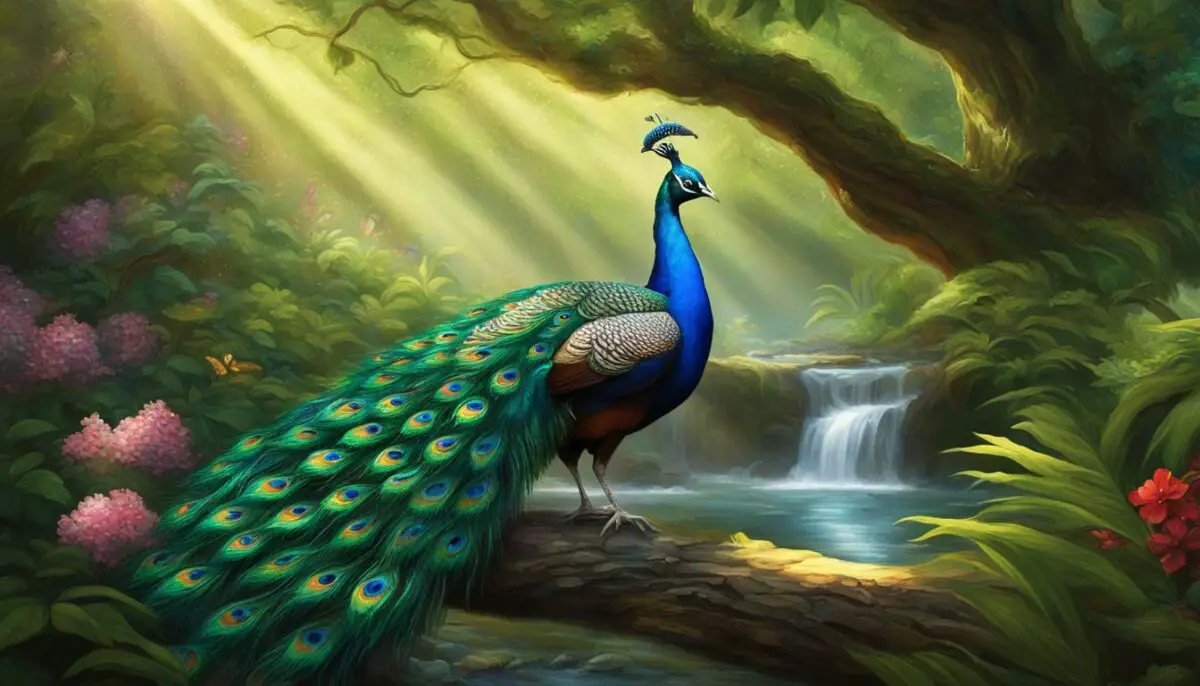
Peacock Winter Adaptations in the Animal Kingdom
Peacocks are not the only animals that have adaptations to survive the winter months. Throughout the animal kingdom, various species exhibit strategies to cope with cold temperatures and limited food availability. While some animals, such as bears, hibernate by entering a state of deep sleep to conserve energy, peacocks exhibit torpor, a less intense form of dormancy. Other animals, including squirrels and birds, may migrate to warmer areas during the winter. Each species has developed unique adaptations to ensure their survival, whether it involves hibernation, torpor, migration, or other behavioral and physiological changes.
While peacocks do not hibernate like some animals, they possess remarkable ways to cope with winter conditions. Their ability to adjust their activity levels, seek sheltered areas, and even enter a state of torpor showcases their resilience and adaptability. These adaptations allow peacocks to conserve energy and maintain their survival during the colder months. It is fascinating to explore how different animals have evolved diverse survival strategies, highlighting the intricate balance of nature.
To further illustrate the winter adaptations in the animal kingdom, let’s consider some examples:
| Animal | Winter Adaptation |
|---|---|
| Bears | Hibernate by entering a state of deep sleep, lowering body temperature, and conserving energy. |
| Arctic Foxes | Grow thicker fur and develop a white coat to blend into their snowy habitat. |
| Monarch Butterflies | Migrate thousands of miles to warmer regions, avoiding the harsh winter conditions. |
| Ground Squirrels | Enter a state of torpor, lowering their body temperature and decreasing metabolic activity. |
These examples demonstrate the diverse range of winter adaptations in the animal kingdom. While some animals rely on hibernation or torpor, others migrate or develop physical changes to survive the colder seasons. Each species has honed its own unique strategies, ensuring their survival and the continuation of their species in challenging environments.
Admiring the Beauty and Resilience of Peacocks
Peacocks are truly remarkable creatures, captivating us with their stunning beauty and unique adaptations. Their vibrant plumage, with its iridescent blues, greens, and golds, has long been admired by both scientists and enthusiasts alike. Beyond their visual appeal, peacocks also possess remarkable resilience, adapting to different environments and seasons with great success.
These magnificent birds have evolved various adaptations to thrive in challenging conditions, including winter. Their ability to endure cold temperatures and conserve energy through behaviors like torpor is an extraordinary feat. The vibrant colors and patterns of their feathers not only serve as a visual spectacle but also function as insulation, helping them withstand the chill of winter. It’s a testament to their resilience and ability to adapt to their surroundings.
As we observe and appreciate the beauty and resilience of peacocks, we gain a deeper understanding of the wonders of the natural world. Their ability to survive and thrive despite the challenges they face is awe-inspiring. It serves as a reminder that even in the harshest of conditions, beauty and resilience can coexist, showcasing the incredible diversity and ingenuity found in the animal kingdom.
Table: Peacock Adaptations for Winter Survival
| Adaptations | Description |
|---|---|
| Elaborate Plumage | The vibrant feathers of peacocks provide insulation during the winter months, helping them maintain a stable body temperature. |
| Reduced Activity Levels | Peacocks adjust their activity levels during winter, conserving energy by spending more time resting and roosting. |
| Torpor | In colder periods, peacocks can enter a state of torpor, reducing their metabolic rate and conserving energy. |
| Predator Deterrence | When threatened, peacocks display their vibrant plumage and eye-spot markings, startling and deterring potential predators. |
* Table showcases notable adaptations of peacocks for winter survival.
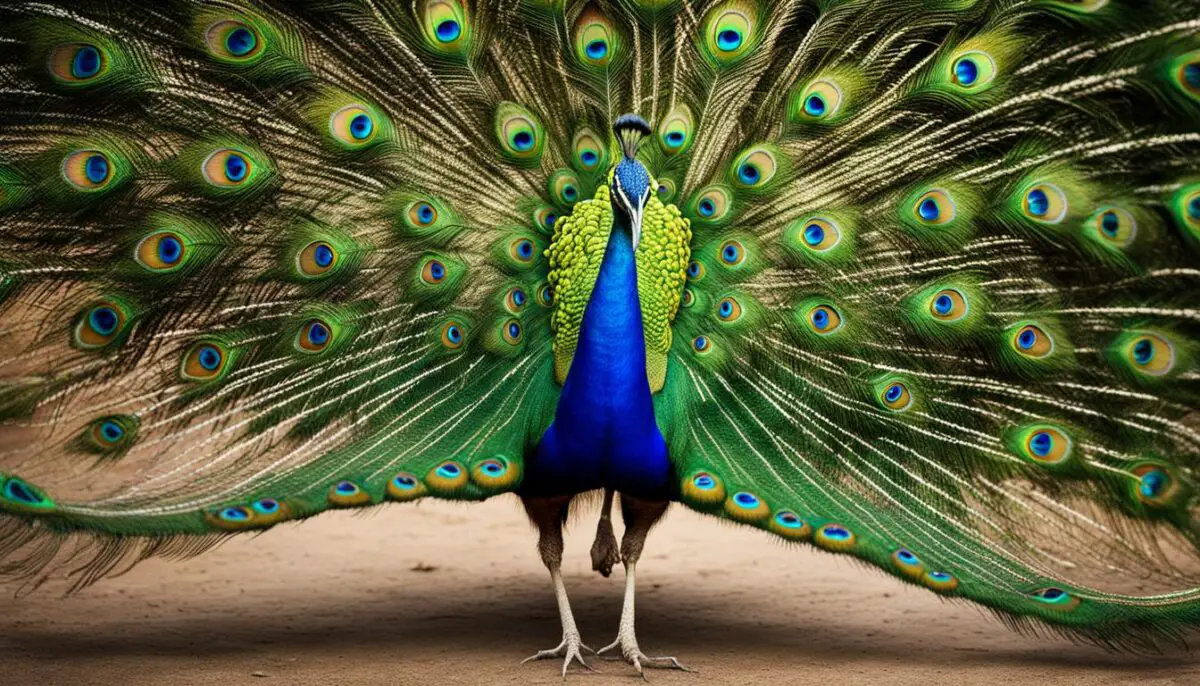
Conclusion
In conclusion, peacocks exhibit unique behaviors and adaptations to survive the winter. While they do not hibernate like some other animals, they adjust their activity levels, seek sheltered areas, and may enter a state of torpor to conserve energy. Their elaborate plumage serves as insulation and a means of communication and defense. By observing and understanding these adaptations, we gain a deeper appreciation for the resilience and delicate balance of nature.
Peacocks’ ability to withstand winter conditions and maintain their vibrant feather displays is truly remarkable. Their adaptations not only help them survive but also serve as a reminder of the incredible diversity and ingenuity found in the animal kingdom. By exploring the mysteries of peacock winter behavior, we can enhance our understanding of their behavior and the rich biodiversity of the natural world.
As we delve into the intricacies of peacock adaptations, we gain valuable insights into how different species cope with challenging environments. Appreciating the beauty and resilience of peacocks allows us to broaden our perspective on the wonders of the natural world. Peacocks are a symbol of strength and grace, embodying the intricate web of life and inspiring us to protect and cherish our planet.
FAQ
Do peacocks hibernate?
No, peacocks do not hibernate. They are active year-round, even during the winter months.
How do peacocks survive the winter?
Peacocks adjust their behavior by reducing their activity levels and seeking shelter in trees or other protected areas. They may also enter a state of torpor to conserve energy.
What is torpor?
Torpor is a state of dormancy where the metabolic rate decreases, and the body temperature lowers. Peacocks utilize torpor as an adaptation to survive colder periods.
How do peacocks stay warm in the winter?
Peacocks have dense feathers that provide insulation against the cold. They also seek sheltered spots and use their vibrant plumage as a means of heat retention.
How do peacocks protect themselves from predators during winter?
Peacocks have defense mechanisms such as displaying their vibrant plumage and eye-spot markings to startle predators. They may also hiss and make noise to deter potential threats.
What are the benefits of being close to nature, including observing peacocks in the wild?
Spending time in nature can reduce stress, improve mood, and enhance physical health. It can also enhance creativity and problem-solving abilities.
Do other animals hibernate during the winter?
Yes, some animals hibernate, while others migrate or exhibit other behavioral and physiological changes to cope with the winter. Each species has unique adaptations.
What can peacocks teach us about resilience and adaptability?
Peacocks’ ability to withstand winter conditions and use their adaptations for survival serves as a reminder of the incredible diversity and ingenuity found in the animal kingdom.
Source Links
- https://www.thedarkmagazine.com/the-hibernating-queen/
- https://www.linkedin.com/posts/elizabeth-welles-33871a7_gorgeous-video-and-a-beautiful-message-about-activity-7025921857040093184-txFi?trk=public_profile_like_view
- https://nurturing-nature.co.uk/wildlife-garden-videos/toughest-butterfly-on-the-block-the-peacock-butterfly-hiss/


